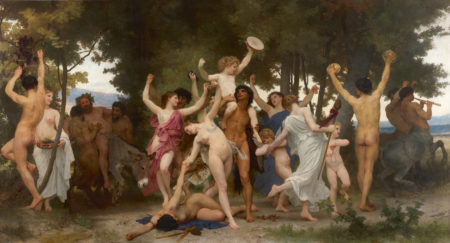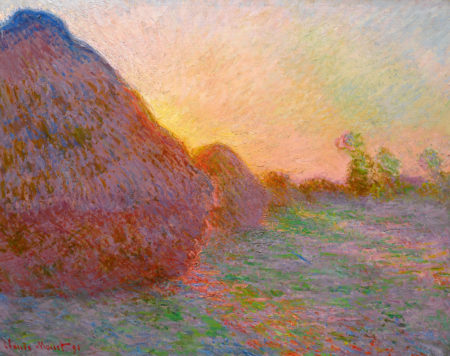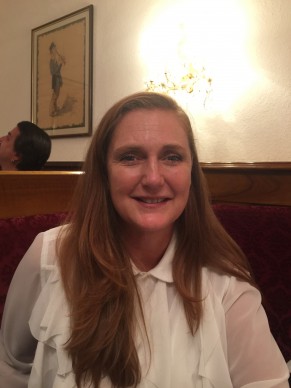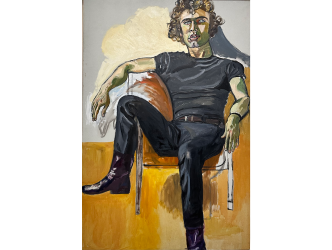Specialized in nudity
Young boys and girls disrobe to dance a graceful saraband in a composition over six metres long.
In 1884, the then famous French painter William Bouguereau (1825-1905), who specialized in nudity under mythological pretexts, created what he no doubt considered to be his masterpiece, “La jeunesse de Bacchus” (The Youth of Bacchus). It’s the largest canvas he ever painted (331 x 610cm). He wanted to prove to the impressionists, his far more innovative rivals, that he was capable of making a grand gesture. Just a few months ago, the “Jeunesse de Bacchus” filled a whole section of wall in the artist’s studio in Paris, on Rue Notre Dame des Champs, where it had remained since Bouguereau’s death, in spite of the building being transformed into housing by his inheritors.
A colossal estimate
But on 14 May this painting will be one of the stars of the impressionist and modern art sale at Sotheby’s in New York – despite its being neither impressionist nor modern. It is presented with a colossal estimate of 25 million dollars, while the artist’s record price reached 3.5 million dollars in 2000. It’s a gamble. “This work has a quasi-cinematic presence,” explains the expert Pascale Pavageau in Paris. “Nothing like it has ever gone up for auction. The major American museums or Asian collectors may well be interested in such a painting.”
Monet is about the light
The other star of the season at Sotheby’s in New York is a real impressionist work this time, and could even be described as one of the icons of the genre. It’s a canvas by Claude Monet depicting the setting sun at the end of the day shining over haystacks. Between 1890 and 1891 Monet painted twenty-five renditions of different effects of the light over these triangular mounds constructed by farmers after the harvest near Giverny. From the Musée d’Orsay to the Getty in Los Angeles via the National Gallery in Edinburgh, 17 versions of the haystacks can be found in institutions today. “Monet is all about the light, and it doesn’t get much more accomplished than in this painting,” explains Julian Dawes in New York, who is in charge of the sale. The last haystack sold in 2016 for 81.4 million dollars. This one could significantly surpass its 55 million estimate to set a new record.
S.I Newhouse
But this season it is Christie’s, with eleven works from the collection of the New York media mogul who died in 2017 Samuel Irving Newhouse (estimated to be in excess of 130 million dollars, and also includes a “Rabbit” by Jeff Koons presented in the contemporary art sale, estimated at 50 million dollars), who are presenting the most spectacular offering on 13 May.
Cézanne
It features, along with an Arles painting by Van Gogh, a still life by Cézanne with his famous apples positioned on a creased tablecloth. The composition contains, as is often the case in the Aix master’s work, certain anomalies which catch the viewer’s eye. On the left-hand side he has left a part of the canvas unpainted and the tablecloth is treated like a mountainous landscape. Estimate: 40 million dollars. The New York collector acquired this canvas in 1999 for 29.4 million dollars.
A stone head by Modigliani
The Italian painter Amedeo Modigliani (1884-1920) mainly wanted to be a sculptor, but his fragile health only permitted him to produce a limited number of three-dimensional works, as shown in 2017 at the exhibition at the Tate gallery.
Christie’s is presenting a rare head by Modigliani carved from stone, of an extremely modern nature, the product of a mixture of African, Cambodian and also most likely Indian art. It is estimated at 30 million euros. The record price for a head by Modigliani, 70.7 was reached in 2014 for another stone head with an even more radical design.
Balthus
It’s also Christie’s who are proposing the best canvas by Balthus (1908-2001), the French-Swiss painter of Polish origin, to have appeared at auction in recent years. Painted in 1939 it depicts a young girl, in a slightly unbalanced pose, with long white socks and bare thighs scarcely covered by a short skirt. It’s a fascinating description of the charms of the passage from childhood into adulthood. It made the cover of the exhibition catalogue dedicated to the master in 2013 at the Metropolitan Museum.
According to the private dealer Thomas Seydoux, “the market for Balthus is strong but limited in terms of collectors.” The highest price for the artist at auction was set in 2015 at 9.9 million dollars but the Christie’s estimate for this painting, which came from the collection of Dorothy and Richard Sherwood from Los Angeles, is 12 million dollars.
More cautious?
But at Christie’s the head of the department, Adrien Meyer, believes that the auction house is now acting more cautiously: “The November sales were a wake-up call for us, with higher than usual numbers of works left unsold.” This is added to the fact that there’s been uncertainty recently over a noticeable retreat from the market by the Chinese, who represent according to him “40% of bidders for the very high-end works”.
Who in the world today is buying the available masterpieces from the history of modern art? We’ll find out on 13 and 14 May.
Support independent news on art.
Your contribution : Make a monthly commitment to support JB Reports or a one off contribution as and when you feel like it. Choose the option that suits you best.
Need to cancel a recurring donation? Please go here.
The donation is considered to be a subscription for a fee set by the donor and for a duration also set by the donor.













